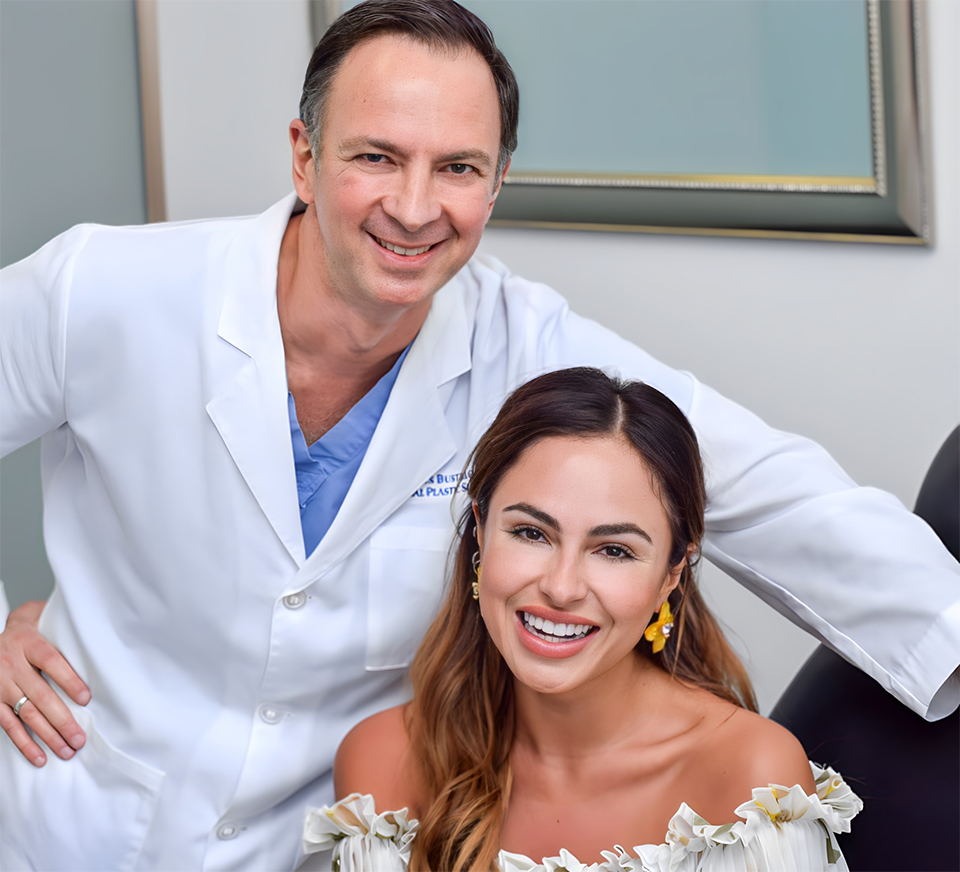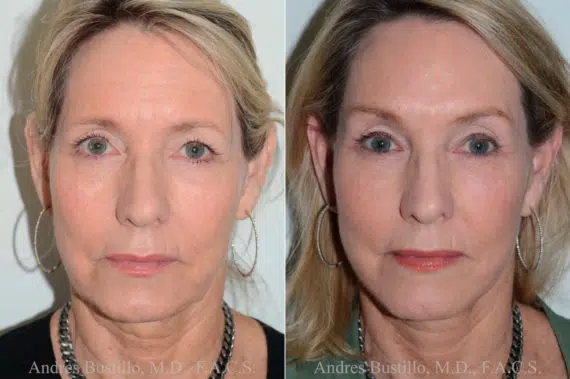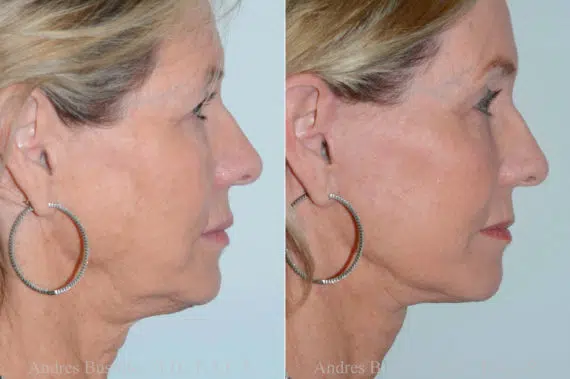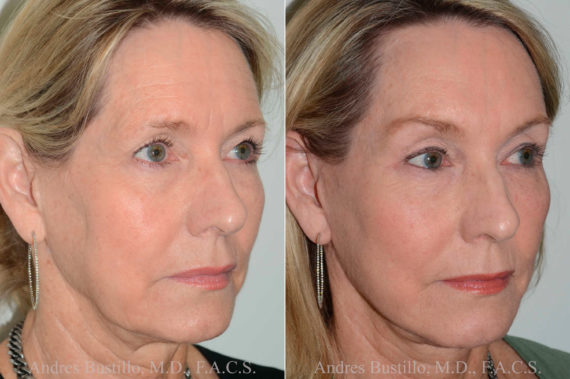Brow Lift Benefits for a Refreshed Look
A brow lift is more than just an aesthetic choice; it’s a transformational procedure that revitalizes your entire face. By elevating the brows, it brings back the youthful vigor around the eye area, smoothing the forehead, and enhancing overall facial harmony. This subtle yet impactful surgery can redefine how you look and feel, offering a fresh, rejuvenated appearance.

What is a Brow lift?
A brow lift, also known as a forehead lift, is a plastic surgery procedure used to smooth the forehead and elevate brows back to their natural, more youthful position. A brow lift does not “stop the clock,” but rather turns it back, as the natural facial aging process continues after the brow lift procedure.

Brow lift at a glance

Patient Testimonials: Real Stories, Real Results
Types of Brow Lift Procedures
Endoscopic Brow Lift
In an endoscopic lift, three small incisions are made on the forehead. A small camera, known as an endoscope, is then used to gently elevate the tissues off the forehead. The brow and forehead are then reattached at a new, higher level. The advantage of this approach is that the incisions are small and recovery is quick. However, heavy or low brows cannot be adequately lifted with this technique.
Hairline brow lift
In a hairline brow lift, a beveled (cut at an angle) incision is made at the hairline. The angle of the cut makes it so that the scar will be almost invisible when it heals. This is typically for patients who have a high forehead, as they are not good candidates for the other two styles of the procedure.
Traditional brow lift
In a coronal (traditional) brow lift, an incision is made on your scalp that will later be hidden by your hair. The procedure will elevate your hairline and thus is used for patients with a low hairline and/or brows. This technique provides the best and longest-lasting elevation of the brows and forehead. However, it has the longest recovery time of the three and carries with it a small risk of hair loss and forehead numbness.
Am I a Good Candidate for a Brow Lift?
The ideal female eyebrow is a gently curved brow that arches just slightly above the superior orbital rim, and the ideal male eyebrow is straight and just slightly above the superior orbital rim. A brow lift can assist in achieving this ideal.
Good candidates for the procedure include men and women who are physically healthy, realistic in their expectations, and seek to improve the appearance of a sagging brow and/or eyelids or smooth out deep furrows between the eyes to recover their youthful appearance. Most patients that undergo the brow lift procedure are forty years of age or older.

Brow Lift Cost in Miami
The cost of a brow lift with Dr. Bustillo typically starts at $6,000. This price includes pre-operative consultations, the surgical procedure, and post-operative care. The exact cost may vary depending on the complexity of the surgery and any additional treatments required. Discussing all potential costs during your consultation is essential to ensure you have a clear understanding of the financial commitment involved. Financing options may be available for those who qualify.
Preparing for Brow Lift Surgery
All patients undergoing the brow lift operation will need to have a medical examination by their primary care physician beforehand. Any aspirin, anti-inflammatory products (ex: naproxen, ibuprofen), and vitamins such as Ginkgo Biloba and St. John’s Wort should be discontinued at least ten days before surgery, as these medications may interfere with blood clotting and cause bruising. Patients should also not drink alcohol for at least five days before surgery to help cut down on swelling.
Dr. Bustillo will also prescribe high-dose vitamin C two weeks before the surgery, and for two weeks afterward to assist in healing and reduce bruising.
Traditional and endoscopic brow lifts are performed either under IV sedation or general anesthesia, depending on if other procedures are combined with the brow lift. If only the brow lift is being performed, the surgery takes about one hour. If an eyelift (blepharoplasty) and facelift are also being performed, the surgery can take up to four hours. Dr. Bustillo will help you decide which options are best for you at your consultation.
Brow Lift Before and After Photos
Each patient is unique and individual results may vary*.
Brow Lift Risks and Side Effects
A brow lift operation, like any surgery, carries risks. If the forehead lift procedure is being done as a single procedure, IV sedation can be used. If it is combined with eyelid surgery or with a facelift, either LMA (masked) or general anesthesia will be used. Dr. Bustillo will go over the risks of anesthesia with you before the procedure.
Additional, possible postoperative risks include infection, hair loss, scarring, and loss of sensation in or ability to elevate the eyebrow, which is usually temporary. Most patients who undergo a forehead lift procedure complain of a mild headache or slight pressure in the forehead for the first few hours after surgery. If an eyelift was performed, some mild bruising may also be visible around the eyes. Over-the-counter pain medication, such as Tylenol, is typically enough to alleviate symptoms, though stronger painkillers may be prescribed on a case-by-case basis. Pain medication is seldom needed after the first night post-surgery.
Nicotine causes the small blood vessels to become narrower, which decreases the blood flow to the skin. Therefore, patients who smoke should refrain from doing so or using nicotine patches for at least two weeks before the surgery. Additional potential complications for smokers include the death of the facial skin, facial scarring, and possible infection. Dr. Bustillo will not perform brow lifts on active smokers.
Significant postoperative pain should be reported to our offices immediately, as it may signal bleeding under the skin. This is extremely rare, but it is possible.
Questions about your procedure?
Schedule a consultation with Dr. Andres Bustillo.
What to Expect During Recovery After Brow Lift
Patients should have a caretaker with them for at least one day after surgery. This person does not need to be a medical professional and can be a family member or friend who can assist with eating, walking, and any other chores. Dr. Bustillo’s office can coordinate a home service to help patients with these activities, as well.
The night after the surgery, activity should be kept to a minimum. Patients should also maintain a liquid diet for the first eighteen hours after anesthesia. The head should be kept elevated using two pillows to help reduce swelling. For every hour spent awake for the first 48 hours, Dr. Bustillo recommends placing small Ziploc bags with frozen peas on the eyes for 10 minutes. So, if you are awake for 24 of those 48 hours, you should use the bags with frozen peas for a total of 240 minutes, or 4 hours.
Patients are seen in the office the day after surgery to remove a light forehead dressing, and some bruising is normal. On the tenth postoperative day, the small sutures are removed, after which Patients can shower and wash their hair.
About eighty percent of the swelling resolves within the first week, post-surgery, and the remainder is typically resolved by the third week. Most people feel comfortable going about their daily lives 7-10 days post-operation since any swelling is typically no longer noticeable to others. However, it is recommended that strenuous physical activity, such as running or weightlifting, not be resumed until four weeks post-surgery.
The results of a brow lift operation usually “turn back the clock” approximately ten years, and the results typically last about ten years.
Why Choose plastic surgeon Dr. Bustillo for your Brow Lift?
Dr. Bustillo is known as a facial aesthetics authority in Miami. He is a double board-certified plastic surgeon with over 20 years in practice and understands how to bring out the best in his patients. He is known for offering natural-looking results from both surgical and non-invasive procedures, prompting his patients to come back again and again.
- Castle Connolly Top Doctor for more than 10 years
- American Board of Facial Plastic and Reconstructive Surgery
- American Board of Otolaryngology-Head and Neck Surgery
- Facial Plastic & Reconstructive Surgery Fellowship at The New York University
- Otolaryngology – Head & Neck Surgery Residency at The University of Miami, Jackson Memorial Hospital
- General Surgery Internship at The University of Miami, Jackson Memorial Hospital





